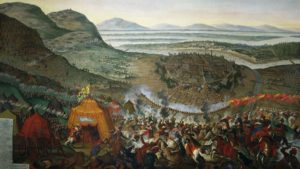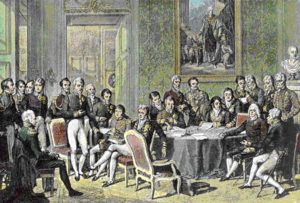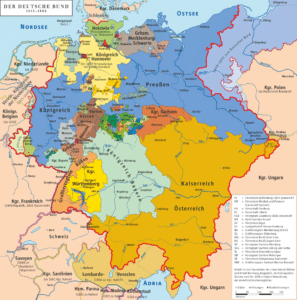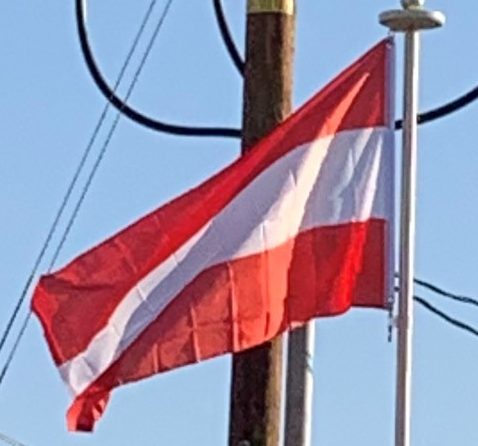
Emperor Charles VI relinquished many of the gains the empire made in the previous years, largely due to his apprehensions at the imminent extinction of the House of Habsburg. Charles was willing to offer concrete advantages in territory and authority in exchange for recognition of the Pragmatic Sanction that made his daughter Maria Theresa his heir. With the rise of Prussia, the Austrian–Prussian dualism began in Germany. Austria participated, together with Prussia and Russia, in the first and the third of the three Partitions of Poland (in 1772 and 1795).
19th Century:
The Congress of Vienna met in 1814–15. The objective of the Congress was to settle the many issues arising from the French Revolutionary Wars, the Napoleonic Wars, and the dissolution of the Holy Roman Empire.

Austria later became engaged in a war with Revolutionary France, at the beginning highly unsuccessfully, with successive defeats at the hands of Napoleon, meaning the end of the old Holy Roman Empire in 1806. Two years earlier, the Empire of Austria was founded. From 1792 to 1801, the Austrians had suffered 754,700 casualties. In 1814, Austria was part of the Allied forces that invaded France and brought to an end the Napoleonic Wars.
It emerged from the Congress of Vienna in 1815 as one of the continent’s four dominant powers and a recognized great power. The same year, the German Confederation (Deutscher Bund) was founded under the presidency of Austria. Because of unsolved social, political, and national conflicts, the German lands were shaken by the 1848 revolution aiming to create a unified Germany.

The various different possibilities for a united Germany were: a Greater Germany, or a Greater Austria or just the German Confederation without Austria at all. As Austria was not willing to relinquish its German-speaking territories to what would become the German Empire of 1848, the crown of the newly formed empire was offered to the Prussian King Friedrich Wilhelm IV. In 1864, Austria and Prussia fought together against Denmark and secured the independence from Denmark of the duchies of Schleswig and Holstein. As they could not agree on how the two duchies should be administered, though, they fought the Austro-Prussian War in 1866. Defeated by Prussia in the Battle of Königgrätz, Austria had to leave the German Confederation and subsequently no longer took part in German politics.
The Austro-Hungarian Compromise of 1867, the Ausgleich, provided for a dual sovereignty, the Austrian Empire and the Kingdom of Hungary, under Franz Joseph I. The Austrian-Hungarian rule of this diverse empire included various Slavic groups, including Croats, Czechs, Poles, Rusyns, Serbs, Slovaks, Slovenes, and Ukrainians, as well as large Italian and Romanian communities.
As a result, ruling Austria–Hungary became increasingly difficult in an age of emerging nationalist movements, requiring considerable reliance on an expanded secret police. Yet, the government of Austria tried its best to be accommodating in some respects: The Reichsgesetzblatt, publishing the laws and ordinances of Cisleithania, was issued in eight languages; all national groups were entitled to schools in their own language and to the use of their mother tongue at state offices, for example.
